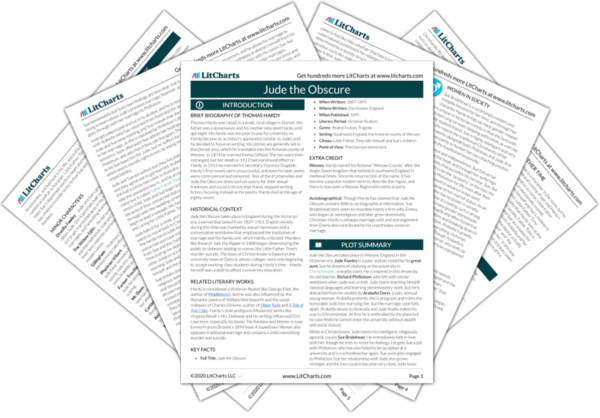Welcome to the LitCharts study guide on Thomas Hardy's Jude the Obscure. Created by the original team behind SparkNotes, LitCharts are the world's best literature guides.
Jude the Obscure: Introduction
Jude the Obscure: Plot Summary
Jude the Obscure: Detailed Summary & Analysis
Jude the Obscure: Themes
Jude the Obscure: Quotes
Jude the Obscure: Characters
Jude the Obscure: Symbols
Jude the Obscure: Literary Devices
Jude the Obscure: Theme Wheel
Brief Biography of Thomas Hardy

Historical Context of Jude the Obscure
Other Books Related to Jude the Obscure
- Full Title: Jude the Obscure
- When Written: 1887-1895
- Where Written: Dorchester, England
- When Published: 1895
- Literary Period: Victorian Realism
- Genre: Realist Fiction, Tragedy
- Setting: Southwest England, the fictional county of Wessex
- Climax: Little Father Time kills himself and Sue’s children
- Point of View: Third person omniscient
Extra Credit for Jude the Obscure
Wessex. Hardy named his fictional “Wessex County” after the Anglo-Saxon kingdom that existed in southwest England in medieval times. Since his resurrection of the name, it has become a popular modern term to describe the region, and there is now even a Wessex Regionalist political party.
Autobiographical. Though Hardy has claimed that Jude the Obscure contains little to no biographical information, Sue Brideshead does seem to resemble Hardy’s first wife, Emma, who began as nonreligious and later grew obsessively Christian. Hardy’s unhappy marriage with and estrangement from Emma also contributed to his unorthodox views on marriage.












